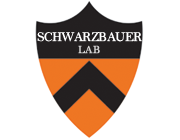Fibroblast migration on fibronectin requires three distinct functional domains
Type
Mesenchymal cell movement is normally constrained; however, fibronectin can provide a pathway for stromal cell migration during embryogenesis, morphogenesis, and wound healing. Cells can adhere to fibronectin via integrin and nonintegrin receptors, which bind multiple unique peptide sequences. Synthetic peptides and recombinant proteins were used to delineate the functional domains needed for human fibroblast migration over fibronectin. The 9th and 10th fibronectin type III repeats, which contain RGD and PHSRN synergy cell attachment sequences, support almost maximal fibroblast attachment, but not migration of primary dermal fibroblasts. Specific sequences within the heparin domain and the IIICS region are also required for migration. These findings predict and additional data confirm the necessity for the cooperation of multiple integrin and nonintegrin receptors for fibroblast migration on fibronectin. Such stringency of migration most likely imposes an immense constraint on normal mesenchymal cell mobility in unperturbed tissue. Loss of such restraint may be critical for the migration cancer cells through the extracellular matrix.

